Traffic Control Devices & Regulation
- Intersection
- Traffic Signal
- Traffic Sign
- Road Marking
Intersection
- Intersection is the area where two or more roads meet or cross.
- At the intersection there are through, turning and crossing traffic movements.
- The movement of traffic are handed depending upon the type of intersection.
There are two type of Intersection.
Intersection at Grade
Grade Separated Intersection
1.Intersection at Grade
When all the roads meets at about the same level allowing traffic movements like crossing, weaving, merging & diverging are called 1Q”Intersection At Grade”.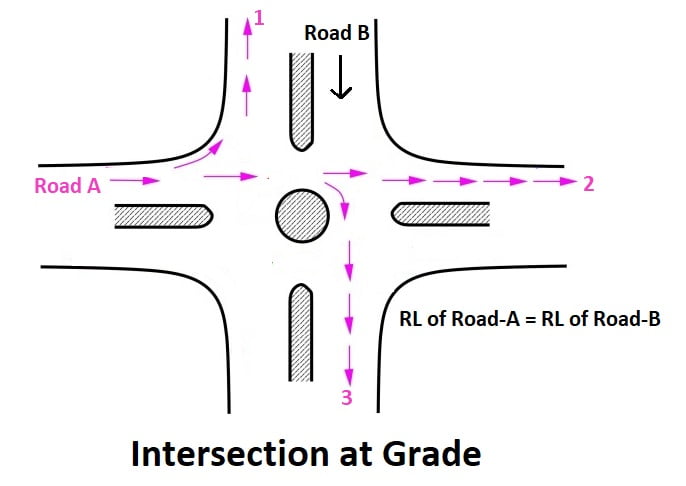
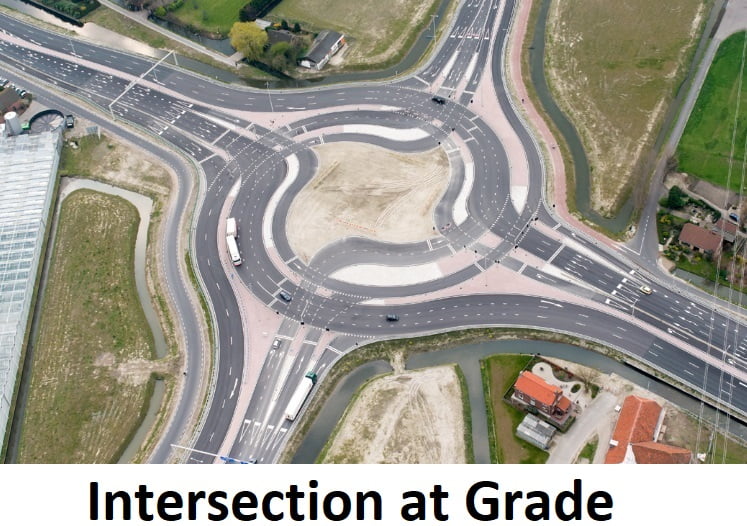
Diverging: It is a traffic operation when the vehicles moving in one direction is separated into different streams according to their destinations.
Merging: Merging is the opposite of diverging. Merging is referred to as the process of joining the traffic coming from different approaches and going to a common destination into a single stream.
Weaving: Weaving is the combined movement of both merging and diverging movements in the same direction.
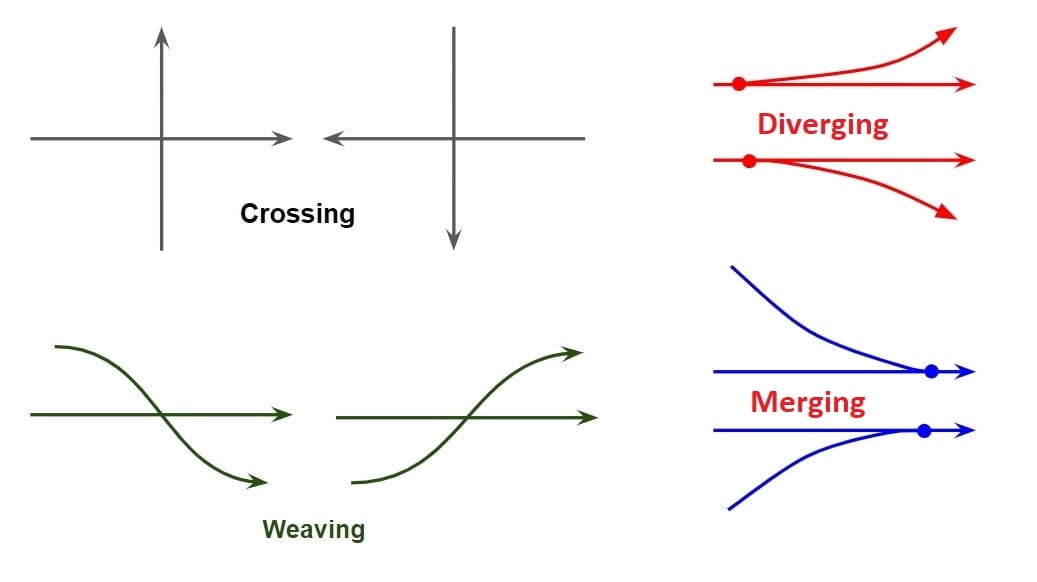
- The point where the possible path of two vehicles intersect is called “Conflict Point”.
- The area containing all possible conflict points is termed as “Conflict Area”.
- If the relative speed & angle of approach of two vehicle is more, it increases the possibility of collision between the vehicle and these conflict point are termed as “Major Conflict Point”. Example- Crossing & Weaving Conflict.
- If the relative speed & angle of approach of two vehicle is less, it decreases the possibility of collision between the vehicle and these conflict point are termed as “Minor Conflict Point”. Example- Merging & Diverging Conflict.
- IRC do not consider Diverging Conflict.
Requirements of Intersection at Grade
Basic requirements of Intersection at Grade are:
- At the intersection the area of conflict should be as small as possible.
- The relative speed and particularly the angle of approach of vehicle should be small.
- Adequate visibility should be available for vehicles approaching the intersection
- Sudden change of path should be avoided.
- Proper sign should be installed.
- Good lighting at night is desired.
confits ke examaple and image
Type of Intersection at Grade
At Grade Intersection are further of following types.
Unchannelized Intersections
- In this entire intersection area is paved and there is no restriction to the vehicles to use any part of this intersection area.
- It is very easy to construct but has most complex traffic operation over it resulting in large conflict area.
- It is suitable to be provided for low traffic volume.



Channelized Intersections
- Channelized intersection is achieved by introducing islands into the intersection area, thus reducing the total conflict area available in the unchannelized intersection.
- It is very useful as traffic control devices for intersection at grade and when the direction of the flow is to be changed.
- It is comparatively difficult to construct.



Rotary Intersection
It is an enlarged road intersection where all converging vehicles are forced to move round a large central island in clockwise direction before they can weave out of traffic flow into their respective directions.
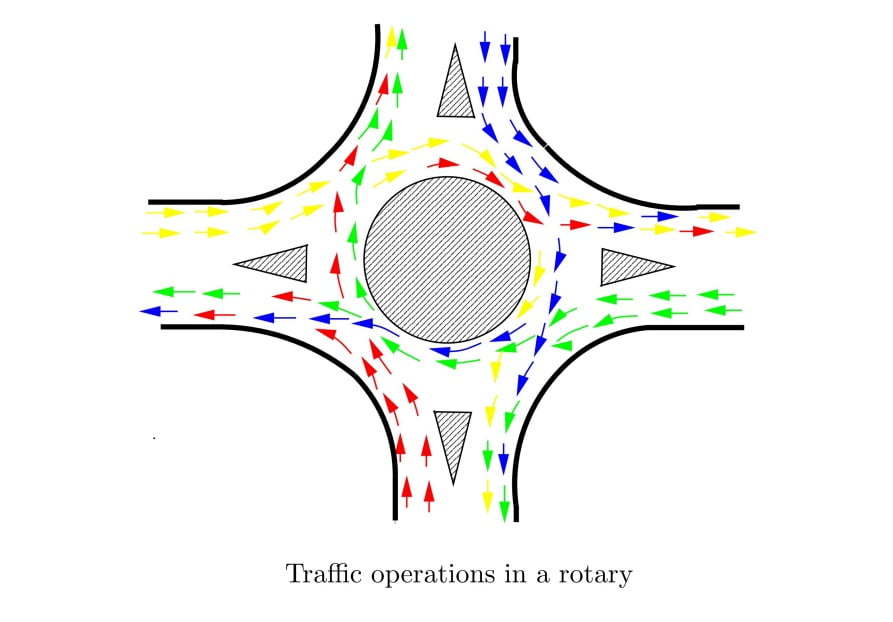
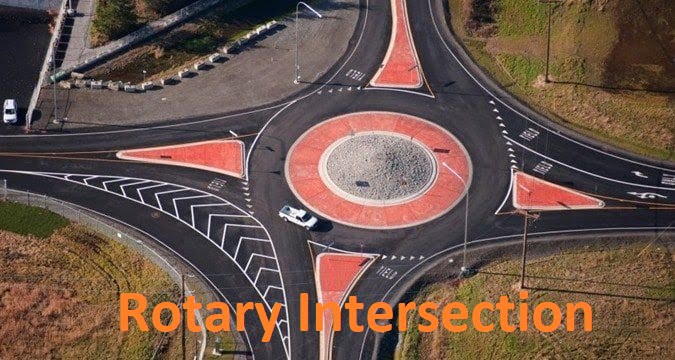
Design Factors For Rotary Intersection
Design Speed
Vehicle approaching at grade intersection have to considerable slow down their speed as compared to design speed of that particular road however there is no need for vehicle to stop at rotary.
- For rural area design speed 40kmph.
- For urban area design speed 30kmph.
Shape of Rotary Island
- The shape of central island depends on the number and layout of the Intersecting roads.
- When two equally important roads cross at roughly right angles ie all the four radiating are placed symmetrically, Circular shape is suitable.
- The island may be elongated to accommodate in layout where more than four intersecting road are there termed as elliptical shape
- Tangential shape of rotary is preferred when traffic in one direction is significant compared to traffic in other direction.
- Turbine shape force reduction in speed of vehicles entering the rotary but creates the problem at night of head light glare.
Radius of Curve at Entry
Radius at entry depends on various factors like design speed, super elevation and coefficient of lateral friction. The entry to rotary is not straight but small curvature is introduced which force the driver to reduce the speed.
e+f = v2/gR = V2/127R
e=0
\(R= \frac{v^{2}}{127f}\)Hence, Radius of the entry curve is as follows:
| Type of Road | Design Speed V(kmph) | Radius (m) |
| Rural | 40 | 20-35 |
| Urban | 30 | 15-25 |
Radius of Curve at Exit
Exit radius should be higher than entry radius and radius of rotary island so that vehicle discharge from the rotary at a higher rate.
IRC recommends radius of exit curve to be 1.5→2 time radius of entry curve.
Rexit = (1.5 to 2)× Rentry
Radius of Central Island
IRC recommends radius of central island to be 1.33 time radius of entry curve.
RC.I = 1.33× Rentry
Width of Carriageway At Exit & Entry
As per IRC width at entry and exit for different lane of approach road are as follows.
For Rural Road
| No of lanes | Width of Carriage Way at entry & exit (m),e1 |
| 2 | 6.5 |
| 3 | 7 |
| 4 | 8 |
| 6 | 13 |
For Urban Road
| No of lanes | Width of Carriage Way at entry & exit (m),e1 |
| 2 | 7 |
| 3 | 7.5 |
| 4 | 10 |
| 6 | 15 |
Width of non-weaving section
The width of non-weaving section of the rotary should be equal to the widest single entry into the rotary and should generally be less than the width of the weaving section(W>e2).
Width & Length of Weaving Section
The width of non-weaving section (e2)of the rotary should be equal to the widest single entry into the rotary and should generally be less than the width of the weaving section(W).
The width of weaving section (W) of the rotary should be one traffic lane wider than mean width of the entry & non weaving section, i.e
\(W= \frac{e_1+e_2}{2}+3.5\)W= e+3.5 m
Length of Weaving Section
L ≥ 4W
Capacity Of Rotary
The practical capacity of rotary is dependent on the min capacity of the individual weaving section and is given by following expression,
Qp=\([\frac{280W(1+\frac{e}{w})(1-\frac{p}{3})}{(1+\frac{W}{L})}]\)PCU/hours.
Where,
e= (e1+e2)/2 = average width of entry (e1) & width of non- weaving section (e2)
L= Length of weaving section
W= width of weaving section
Note
e/W = 0.4 → 1.0
W/L= 0.12 → 0.4
p= Weaving Ratio
\(p= \frac{b+c}{a+b+c+d}\)Where,
- a = Left turning traffic moving along left extreme lane
- b = Crossing/Weaving traffic turning towards right while entering to the rotary
- c = Crossing/Weaving traffic turning towards left while leaving rotary
- d = Right turning traffic moving along right extreme lane
Conditions to apply the above formula of capacity of rotary are:
- 6 m ≤ width of weaving section (w) ≤ 18m
- e/W = (0.4 – 1)
- W/L = 0.12 – 0.4
- p = (0.4 – 1)
- L = 18 – 90m
2.Grade Separated Intersection
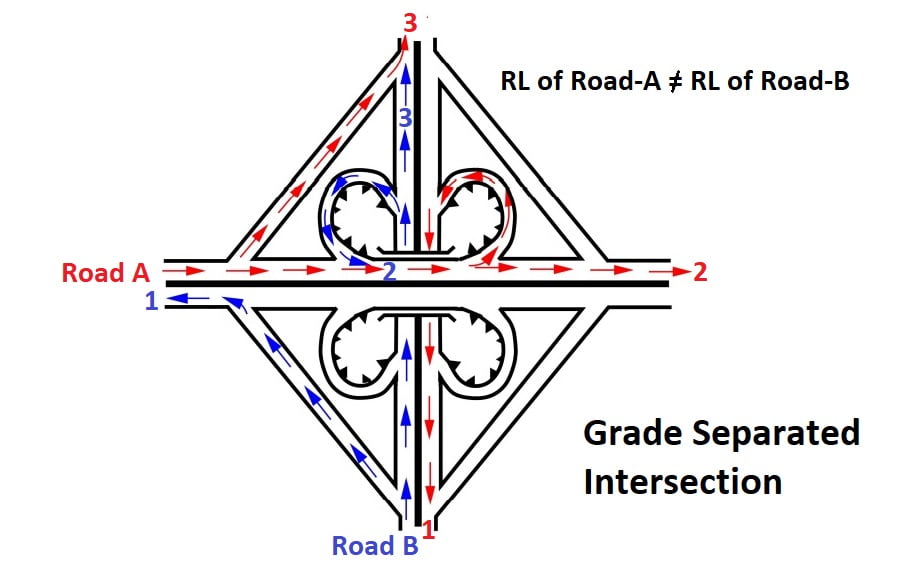
- Grade separation structures that permit the cross flow of traffic at different levels without interruptions.
- Transfer of route at grade separation or turning facilities are provided by “INTERCHANGE” which may be of following types.

Interchange can also be classified on the basis of shape as follows
- Diamond interchange
- Trumpet interchange
- Partial Cloverleaf interchange
- Full Cloverleaf interchange
A. Trumpet interchange
Trumpet interchange is a popular form of three leg interchange. If one of the legs of the interchange meets a highway at some angle but does not cross it, then the interchange is called trumpet interchange.
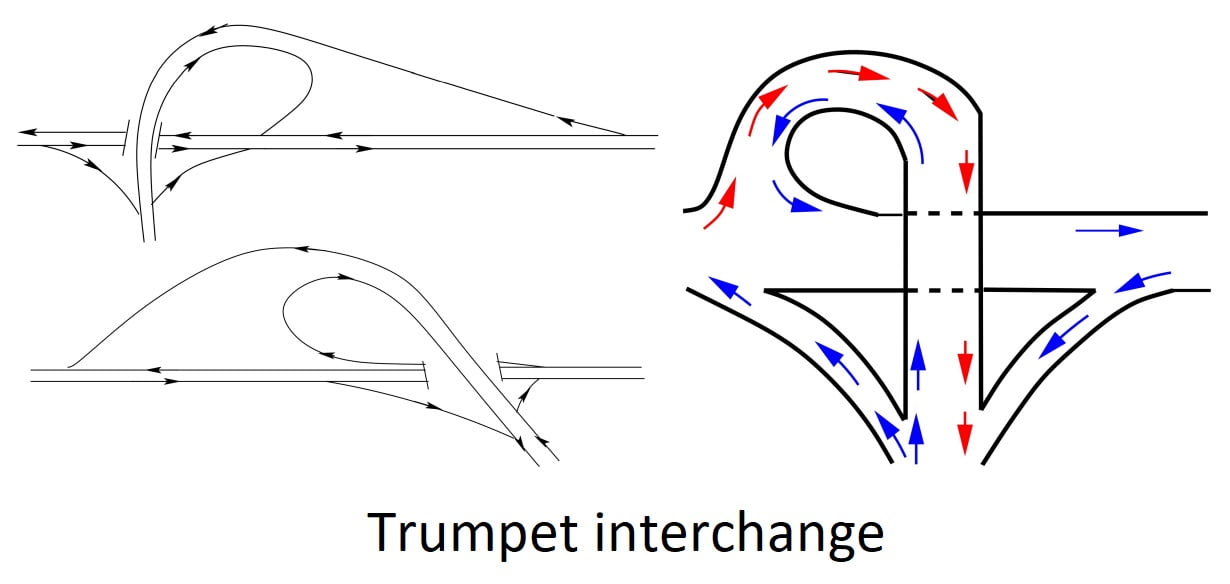
B. Diamond interchange
Diamond interchange is a popular form of four-leg interchange found in the urban locations where major and minor roads crosses. The important feature of this interchange is that it can be designed even if the major road is relatively narrow.

C. Full Cloverleaf interchange
It is also a four leg interchange and is used when two highways of high volume and speed intersect each other with considerable turning movements. The main advantage of cloverleaf intersection is that it provides complete separation of traffic. In addition, high speed at intersections can be achieved. However, the disadvantage is that large area of land is required. Therefore, cloverleaf interchanges are provided mainly in rural areas.

D. Partial Cloverleaf interchange
This is another variation of the cloverleaf configuration. Partial clover leaf or parclo is a modification that combines some elements of a diamond interchange with one or more loops of a cloverleaf to eliminate only the more critical turning conflicts. This is the most popular freeway -to- arterial interchange. Parclo is usually employed when crossing roads on the secondary road will not produce objectionable amounts of hazard and delay. It provides more acceleration and deceleration space on the freeway.
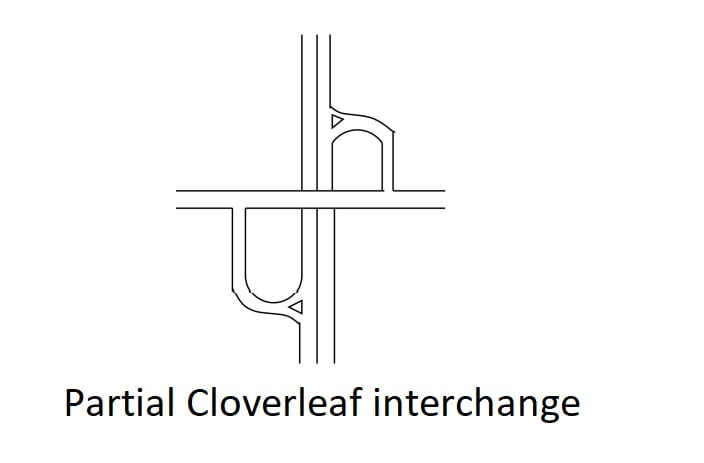
Advantages of Grade Separation
- There is increased safety for turning traffic and by indirect interchange ramp even right turn movement is quite easy and safe.
- There is overall increase in comfort and convenience to the road users.
- Stage constructions of additional ramps are possible after the grade separation structure between main roads are constructed.
Disadvantages of Grade Separation
- It is very costly to provide complete grade separation and interchange facilities.
- Construction of grade separation is difficult and undesirable in the area where there is limited right of way.
- In flat or plain terrain, grade separation may introduce undesirable sags in the vertical alignment.
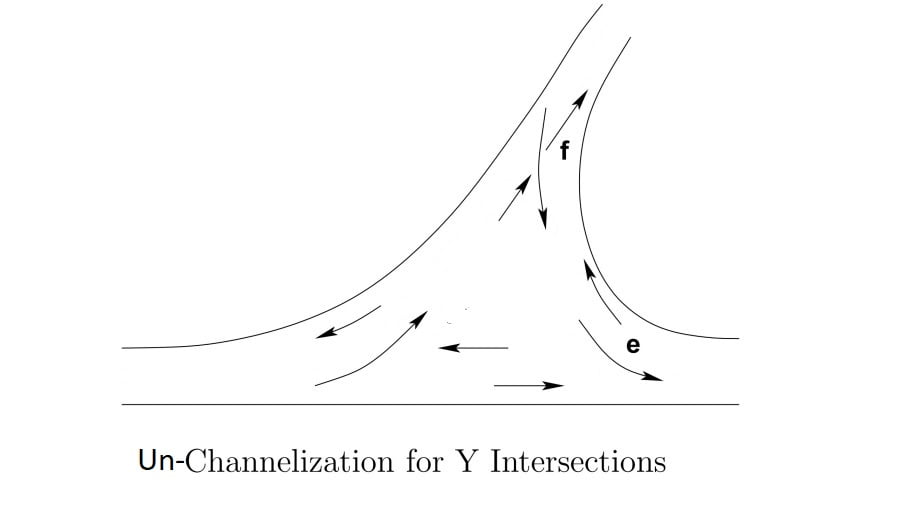
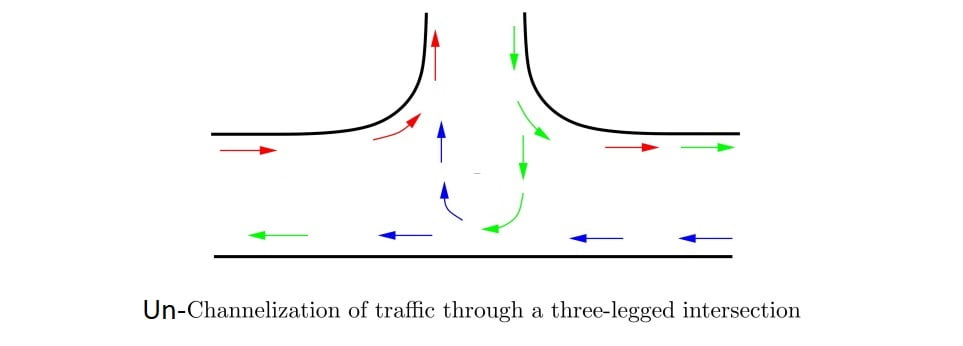

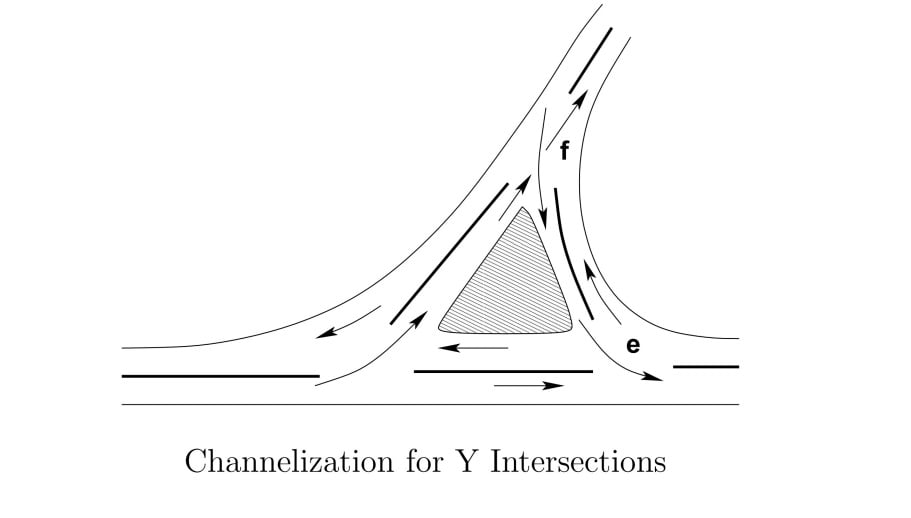
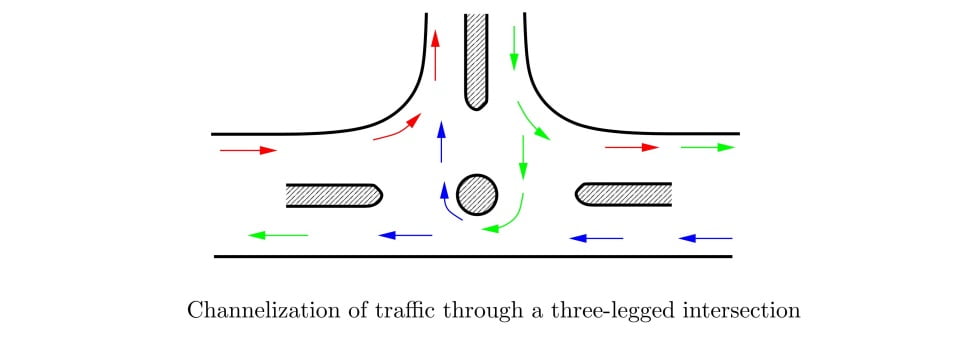
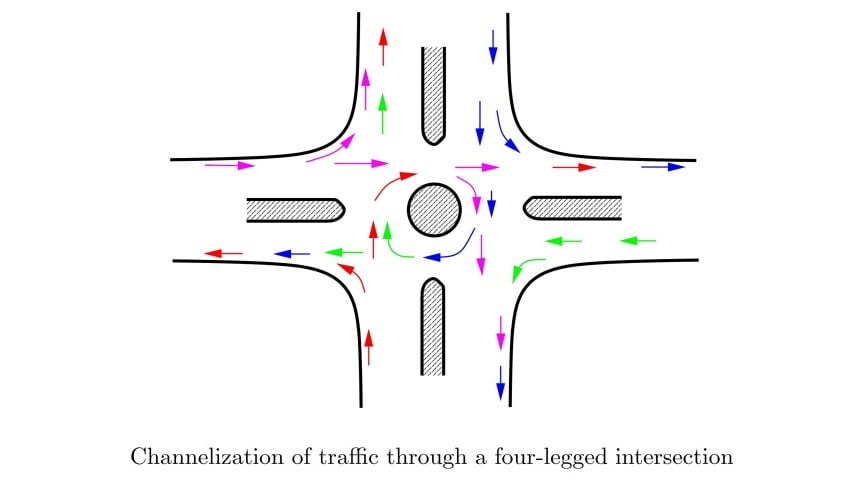
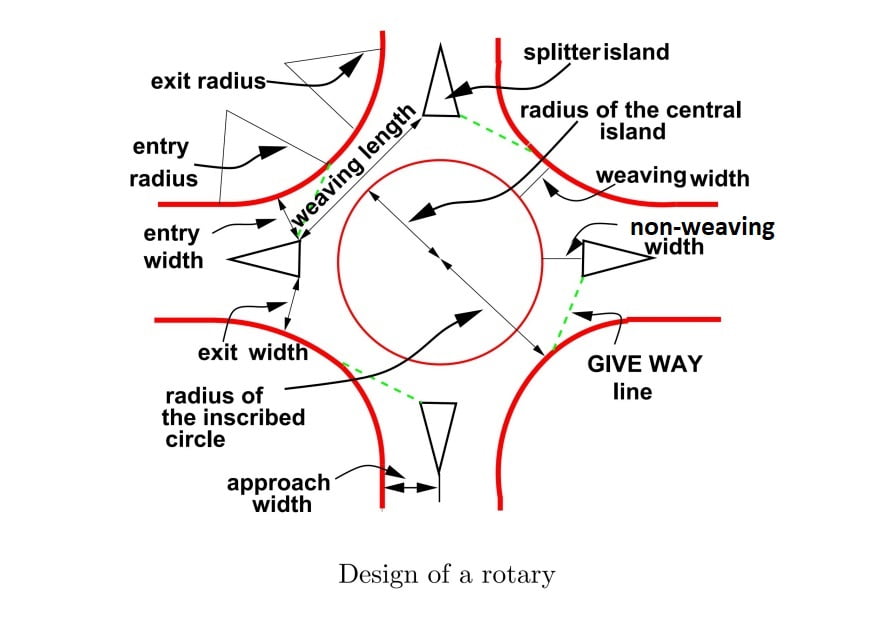
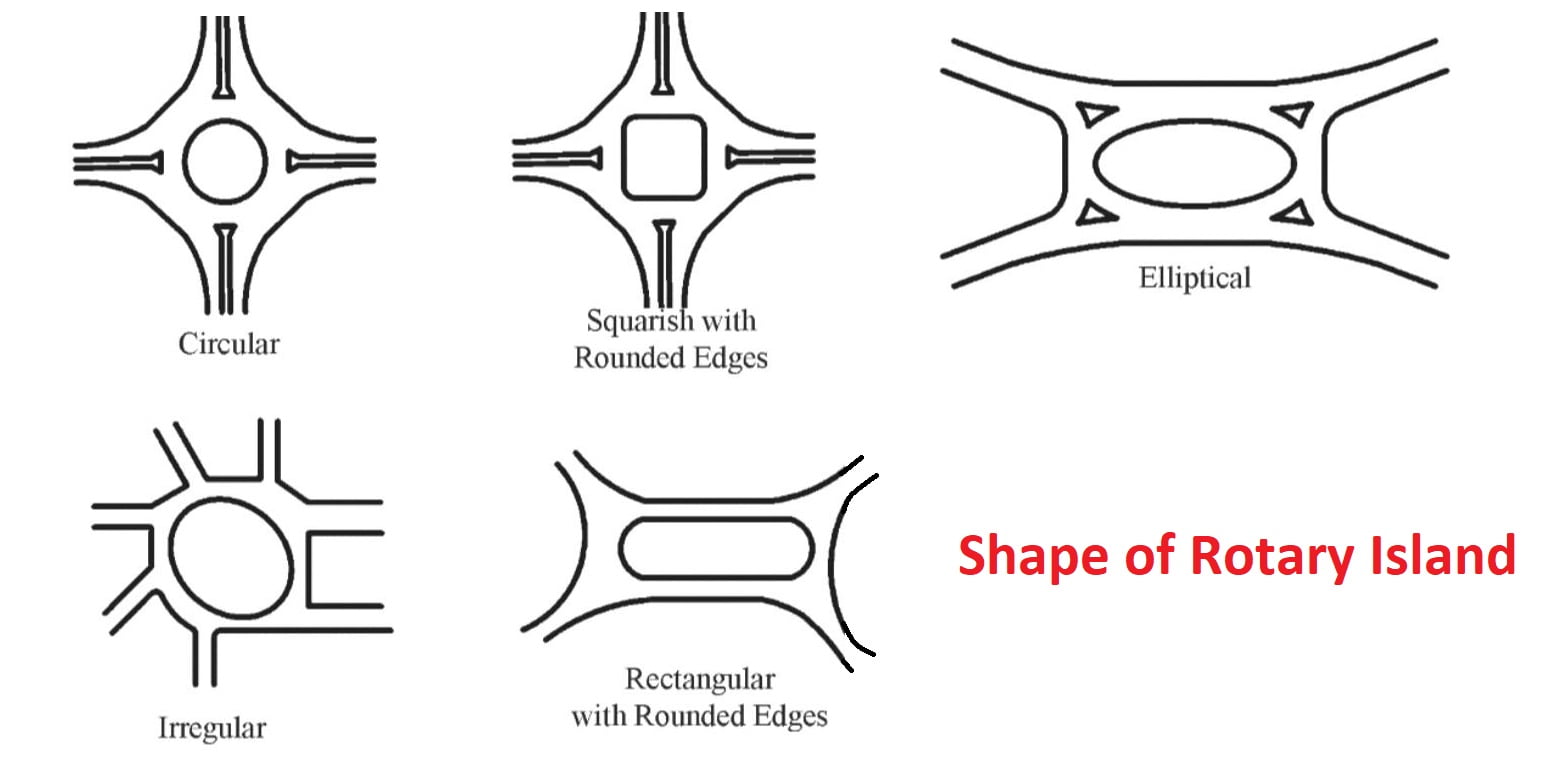
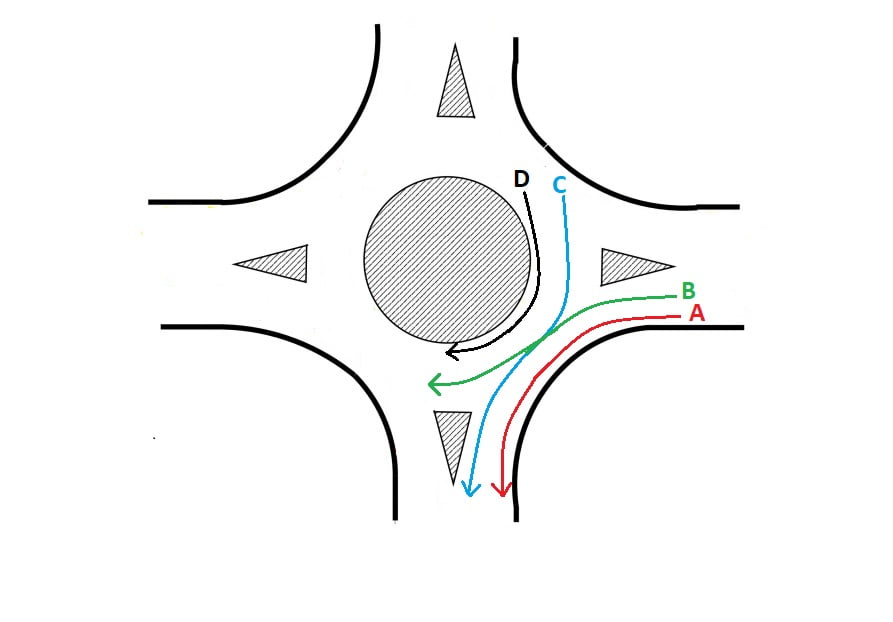
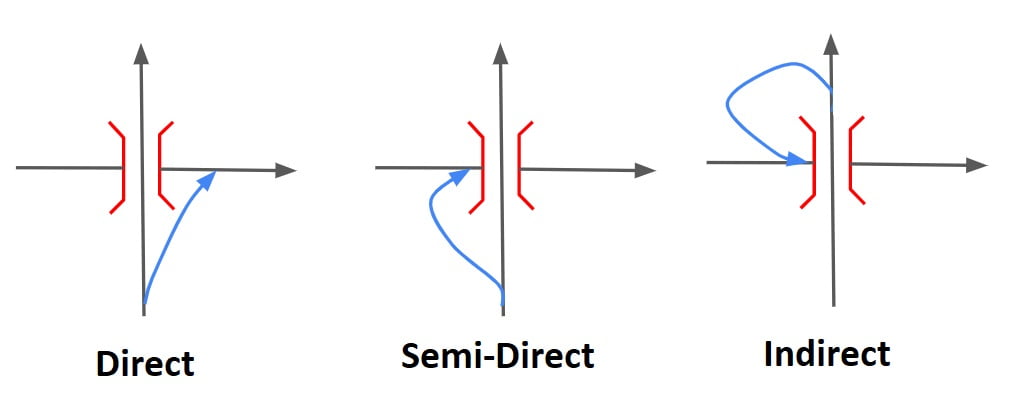
Great Notes easy to understand and teach to students